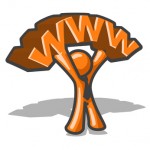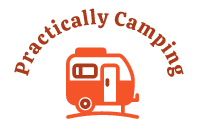 It’s the digital age. Nearly 75% of homes in the US and Canada have internet access. People are connecting electronically more than they ever have before. Young and old alike, you’d be hard pressed to find any significant number of people without at least an email address in today’s world.
It’s the digital age. Nearly 75% of homes in the US and Canada have internet access. People are connecting electronically more than they ever have before. Young and old alike, you’d be hard pressed to find any significant number of people without at least an email address in today’s world.
So what do you do when you take a week or two off and head out with the tent, trailer, or RV? Let’s take a look at how to keep Facebook up-to-date, check email, or read your favorite blog posts while roughing it in the great outdoors.
Campgrounds and RV Parks
Going back just a few years ago, you would have been hard pressed to find a campground that offered Internet access to its patrons. Thankfully, with the rapid adoption of the Internet by our society, most parks and campgrounds now offer Internet access as an amenity.
I’ve personally only ever seen wireless Internet (wi-fi) at any campground I have visited, but it’s possible that wired Internet access could be provided. Check with your campsite when you check-in to see what they offer and how you can start using it. You’ll need your own wi-fi enabled laptop, netbook, tabled (iPad), or smart phone to use this service.
Cell Phones
Who doesn’t have a cell phone these days? Cell phones create a couple of different opportunities for Internet access. The first option is to simply access your favorite sites using the built-in browser on your phone. This isn’t ideal, but it will get you there. Check with your cellular provider to see if there are extra costs for accessing this service.
The second option is to tether your cell phone or smart phone to your laptop. You phone then acts as a modem that allows you to create a wireless high speed connection. Be very careful if you are trying this option because most cellular service providers charge a significant amount for data transfers that is initiated in this fashion.
Hot Spots
Hot spots are places that offer (usually) free wireless internet access (wi-fi). You can find thousands of these across the country. I’ve seen hot spots in McDonalds, Starbucks, Panera Bread, and Travel Centers of America. That list is by no means exhaustive, check the local area when you are camping to see who is offering free wi-fi.
Much like the campground wi-fi, you’ll need your own wi-fi enabled laptop, netbook, tablet, or smart phone to use the services of a hotspot. The good news is that you often can get the signal from outside of the building, so you may not even need to go inside.
I’d encourage you to exercise caution when using wi-fi at campground, hotspots and any other public access point. These access points are generally not very secure. Be mindful that information travelling over the wireless can be intercepted by anyone with a little bit of skill.
Satellite
You have to be pretty hardcore to be getting into satellite Internet access on your camping trip. This option is generally very expensive, with satellite systems costing up to $5000 and a monthly connection fee of $100 or more. There are people who need this type of access (maybe for work) and can afford it, but it’s not for everybody.
Final Thoughts
As you can see, there are several options to get plugged into the Internet while you are away. Some of the options are cheaper than others and some are easier than others. Find the one that works best for you.
Now you can get those pictures of your trip up on Facebook in real time or get some ideas on keeping the kids occupied on a rainy day.

You must log in to post a comment.